Related Research Articles

The Douglas Bay Horse Tramway on the Isle of Man runs along the seafront promenade for approximately 1.6 miles (2.6 km), from the southern terminus at the Victoria Pier, adjacent to the Isle of Man Sea Terminal, to Derby Castle station, the southern terminus of the Manx Electric Railway, where the workshops and sheds are located. It is a distinctive tourist attraction. However works have been underway to relay all of the track in 2019 and at present only a third is usable, with no published completion date for the works.
Trams in India were established in the late-19th century. Horse-drawn trams were introduced in Kolkata in 1873; electric trams began in Chennai in 1895, and trams were also introduced in Mumbai, Kanpur, and Delhi. They were discontinued in all Indian cities between 1933 and 1964, except for Kolkata.

Nottingham and District Tramways Company Limited was a tramway operator from 1875 to 1897 based in Nottingham in the United Kingdom.
Sheffield Tramway was an extensive tramway network serving the English city of Sheffield and its suburbs.
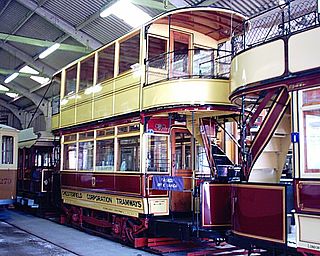
The Chesterfield and District Tramways Company and its successors ran a tramway system in the Derbyshire town of Chesterfield, England. The first horse-drawn line opened in 1882, and in 1897, the system was taken over by Chesterfield Corporation, who extended and electrified it in 1904 and 1905. Additional tramcars were purchased, but two had to be scrapped after a disastrous fire at the depot in 1916. The system suffered from a lack of maintenance as a result of reduced staffing levels during the First World War, and the trams were replaced by trolleybuses in 1927.
The Nottinghamshire and Derbyshire Tramways Company was formed in 1903 to build a tramway linking Nottingham, Derby, and Ilkeston, in Derbyshire, England. But only a short section was built.
The Swansea Improvements and Tramway Company operated street trams in and around Swansea in Wales from 1878 to 1937.

Dundee Corporation Tramways formerly served the City of Dundee in Scotland. The Corporation had financed the construction of a horse tramway in 1877, but had then leased it to the Dundee and District Tramways Company. They had replaced most of the horse trams with steam tram locomotives pulling trailer cars from 1884, but in 1897 the Corporation decided that it would run the tramway system itself. After some negotiation and the payment of compensation, they took over the system in 1899, with a view to electrifying it. Electric trams started running in 1900, and the changeover was completed in 1902.

Lincoln Corporation Tramways operated an electric tramway service in Lincoln, England between 1905 and 1929.
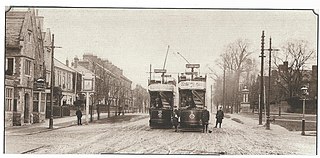
Northampton Corporation Tramways operated an electric tramway service in Northampton between 1904 and 1934.

Tramways in Exeter were operated between 1882 and 1931. The first horse-drawn trams were operated by the Exeter Tramway Company but in 1904 the Exeter Corporation took over. They closed the old network and replaced it with a new one powered by electricity.

Dundee and District Tramways operated a tramway service in Dundee between 1877 and 1899.
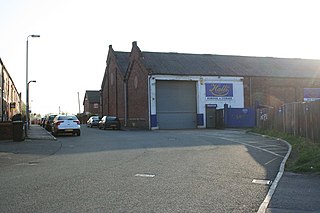
Wigan Corporation Tramways operated a tramway service in Wigan, England, between 1901 and 1931. The first tramway service in the town was run by the Wigan Tramways Company, whose horse trams began carrying passengers in 1880. They began replacing horses with steam tram locomotives from 1882, but the company failed in 1890 when a Receiver was appointed to manage it. The Wigan & District Tramways Company took over the system in 1893 and ran it until 1902. Meanwhile, Wigan Corporation were planning their own tramway system, obtaining an authorising Act of Parliament in 1893, and a second one in 1898. This enabled them to build electric tramways, and in 1902, they took over the lines of the Wigan & District Tramways Company.
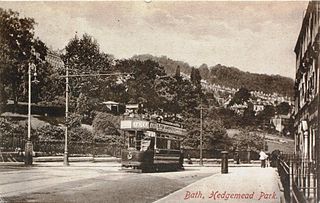
Bath Tramways Company and its successors operated a 4 ft horse drawn tramway service in Bath between 1880 and 1902. From 1903 until its closure in 1939 an expanded route carried electric trams operated by Bath Electric Tramways Company.
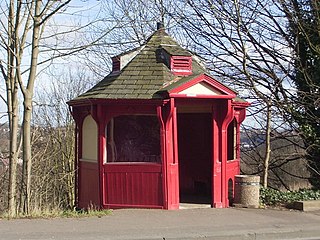
Huddersfield Corporation Tramways operated a tramway service in Huddersfield, England, between 1883 and 1940. It initially used steam locomotives pulling unpowered tramcars, but as the system was expanded, a decision was taken to change to electric traction in 1900, and the first electric trams began operating in February 1901. The system was built to the unusual gauge of 4 ft 7+3⁄4 in, in the hope that coal wagon from neighbouring coal tramways, which used that gauge, could be moved around the system. This did not occur, but two coal trams were used to delivered coal to three mills.
Keighley Tramways Company operated a tramway service in Keighley between 1889 and 1901 with horse power. The system re-opened three days later as Keighley Corporation Tramways and stayed in service until 1924 when it closed for good.
The Belfast Street Tramways operated horse-drawn tramway services in Belfast from 1872 to 1905. Its lines later formed a major part of the Belfast Corporation Tramways.
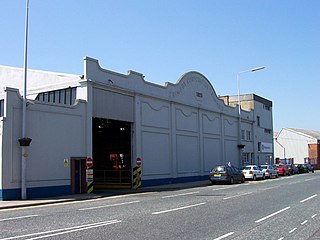
The Great Grimsby Street Tramways Company was a tramway serving Grimsby and Cleethorpes in Lincolnshire, England. It was a subsidiary of The Provincial Tramways Company. They opened a horse tramway in 1881, running from the Wheatsheaf Inn in Bargate to the border with Cleethorpes, with a branch along Freeman Street, and extended the line into Cleethorpes in 1887. It followed the trend of many British systems, and was converted to an electric tramway in December 1901. Small extensions were made to the system at both ends, but the basic plan of the system remained the same throughout its life.
Bradford Corporation Tramways were a tramway network in the city of Bradford, West Riding of Yorkshire, England which operated trams from 1882 until 1950 and trolleybuses from 1911 until 1972. The track gauge of the tramways was 4 ft.

Stockport Corporation Tramways operated a tramway service in Stockport, England, between 1901 and 1951. It was preceded by a horse tramway from Levenshulme to Stockport, which opened in 1880, and was ultimately run by the Manchester Carriage and Tramways Company. A second independent horse tramway opened in 1890, running to Hazel Grove. In 1899 the Corporation bought the first line, electrified it, and leased it back to the operating company. Their powers to buy the Stockport and Hazel Grove Tramway, authorised by the same Act of Parliament, were not exercised until 1905.
References
- ↑ The Golden Age of Tramways. Published by Taylor and Francis.
- ↑ Yarnell, D. H. "The Tramways of the City of Lincoln" Tramway Review , Vol. 8, No. 63, Autumn 1970.
- 1 2 Yarnell, D. H. Yarnell. "The Tramways of the City of Lincoln", Tramway Review , Vol. 8, No. 64, Winter 1970.
- ↑ UK Retail Price Index inflation figures are based on data from Clark, Gregory (2017). "The Annual RPI and Average Earnings for Britain, 1209 to Present (New Series)". MeasuringWorth. Retrieved 2 December 2021.